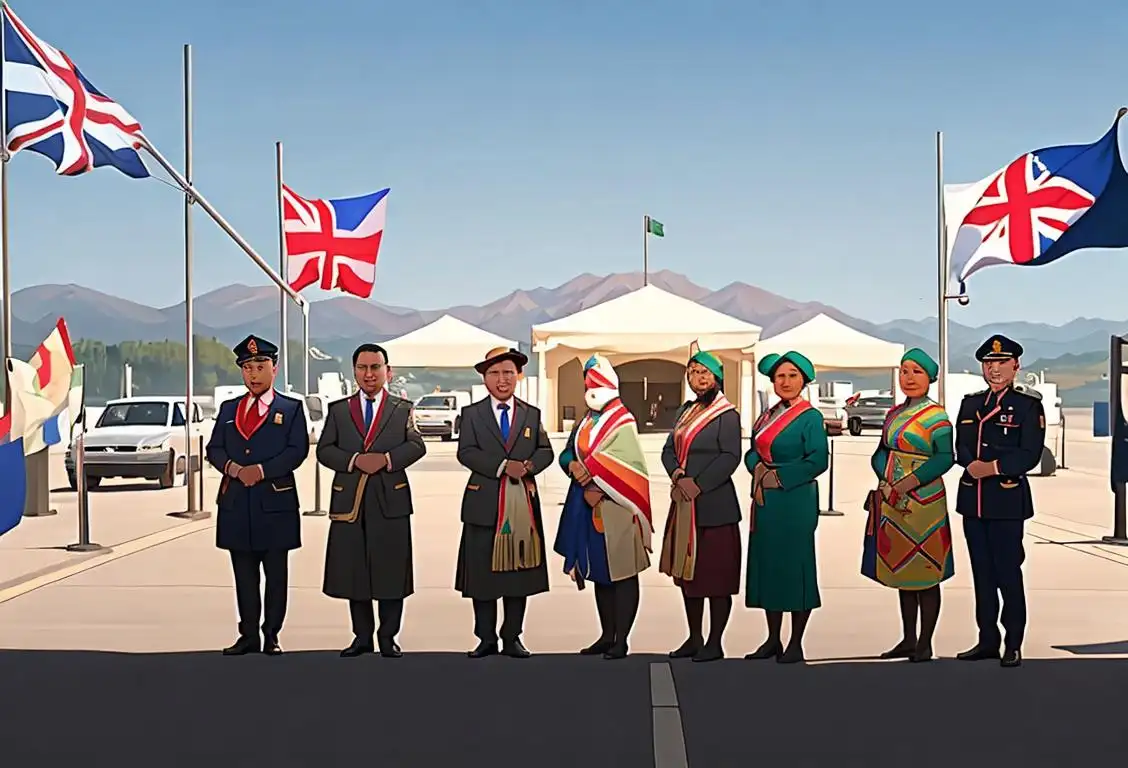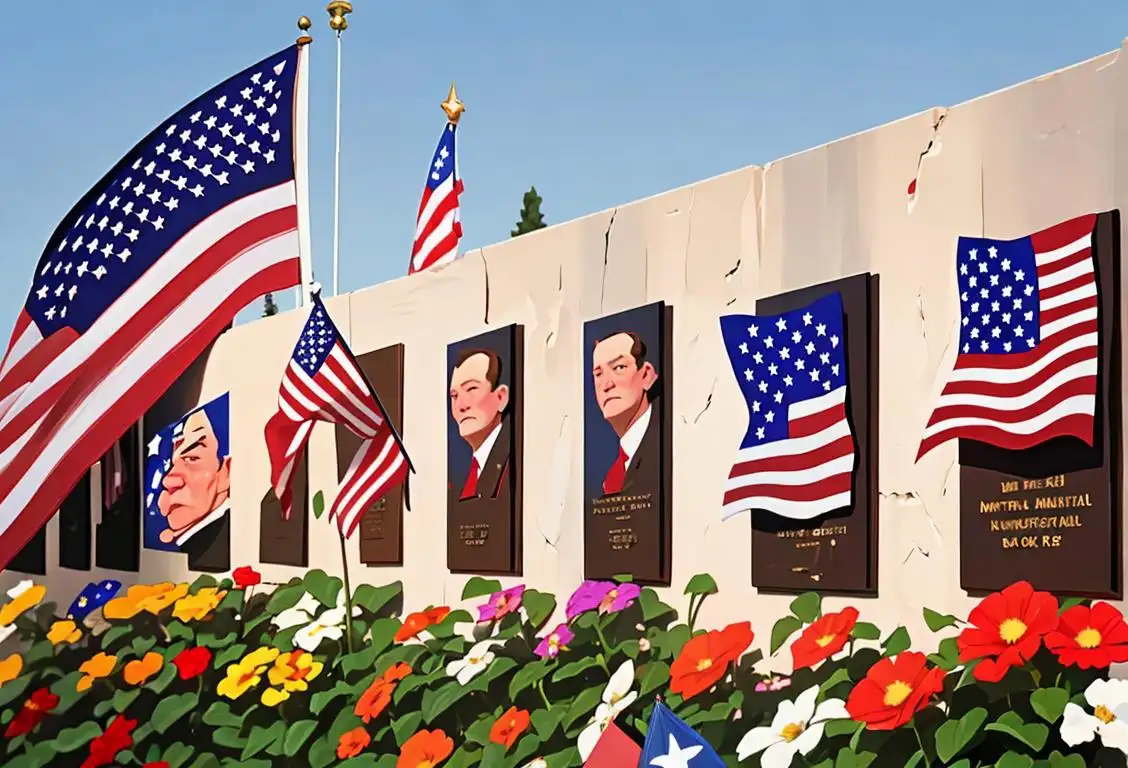National Border Control Day

Welcome to WhatNationalDayIsIt.com, where we dig into the fascinating history behind those special days that we celebrate! Today, we're exploring the intriguing world of National Border Control Day.
When is Border Control Day?
It's national border control day on the 31st March.
The Birth of National Border Control Day
Every year on March 31st, National Border Control Day reminds us of the vital role that border control plays in maintaining the safety and security of a nation. Though border control itself is not a recent development, this national day aims to raise awareness and appreciation for the men and women who dedicate their lives to protecting our borders.

The Evolution of Border Control
Border control measures have existed throughout history, with different civilizations implementing strategies to protect their territories. From ancient walls and fortresses to modern-day checkpoints and surveillance systems, the methods and technologies may have changed, but the purpose remains the same: ensuring the safety and integrity of a nation's borders.
Throughout history, border control has been a topic of debate and controversy. While it is crucial for managing immigration, preventing smuggling, and enhancing national security, it also raises questions about human rights and the impact on individuals.
Celebrating National Border Control Day
On National Border Control Day, we express appreciation for the hardworking individuals who serve in border control agencies and departments. These dedicated professionals work tirelessly to manage borders, process immigration, prevent trafficking, and maintain the safety of their respective nations.
It's also a day to reflect on the importance of striking a balance between security and humanity. Border control policies should be efficient, fair, and mindful of human rights, accommodating the movement of people while ensuring the country's overall well-being.
A Fun Fact for National Border Control Day!
Did you know that the concept of border control goes back thousands of years? Ancient civilizations, like the Egyptians, built massive walls and guarded their borders from invaders long before the advent of modern technology!
History behind the term 'Border Control'
1848
Treaty of Guadalupe Hidalgo
The term 'border control' can be traced back to the Treaty of Guadalupe Hidalgo signed in 1848. This treaty marked the end of the Mexican-American War and established the border between Mexico and the United States. It introduced the concept of controlling the movement of people and goods across the newly defined border.
1924
The Establishment of Immigration Act
In 1924, the United States passed the Immigration Act, also known as the Johnson-Reed Act. This act limited the number of immigrants allowed into the country based on nationality and established the Border Patrol as a part of the Immigration Bureau. The primary purpose of the Border Patrol was to prevent unauthorized immigration and ensure border security.
1933
The Growth of Border Patrol
During the Great Depression in the 1930s, the Border Patrol expanded its presence along the United States' borders. Its primary focus was on preventing the entry of unauthorized immigrants who might take jobs away from American citizens struggling with unemployment. The Border Patrol implemented a range of tactics such as increased surveillance, deportations, and the construction of physical barriers.
1882
Chinese Exclusion Act
In 1882, the United States passed the Chinese Exclusion Act, which was the first significant federal law to explicitly target immigration control. This act restricted Chinese immigration and established a system of border control checks to enforce the ban. While not explicitly using the term 'border control,' the act laid the foundation for later immigration control policies.
1945
Border Control Post World War II
After the end of World War II, there was a significant increase in global migration due to the displacement of people, refugees, and war-torn economies. As a response to the increased flow of migrants, border control efforts intensified in many countries, not just the United States. The aim was to regulate immigration, protect national security, and prevent the entry of individuals with criminal backgrounds or political affiliations.
1924
Johnson-Reed Act
The Johnson-Reed Act of 1924, also known as the Immigration Act of 1924, further reinforced border control measures in the United States. This act introduced a quota system, which restricted the number of immigrants based on their nationality. It established strict immigration policies and required the inspection and documentation of individuals entering the country, thus expanding the scope of border control.
1965
Immigration and Nationality Act Amendments
In 1965, the United States passed the Immigration and Nationality Act amendments. This legislation abolished the national-origin quota system established in 1924, which had favored immigrants from specific countries. The amendments sought to prioritize family reunification and attract highly skilled immigrants. Despite these changes, border control remained an essential aspect of maintaining immigration policies and protecting national interests.
1952
Immigration and Nationality Act
The Immigration and Nationality Act of 1952, also known as the McCarran-Walter Act, was a major overhaul of immigration laws in the United States. It expanded the authority of the government to regulate immigration and included provisions for screening and controlling the entry of individuals at the border. This act further solidified the term 'border control' as a fundamental element of immigration policy.
2001
Post-9/11 Security Measures
The terrorist attacks on September 11, 2001, marked a significant turning point in border control history. The attacks led to a heightened focus on national security, resulting in the implementation of stricter border control measures in many countries around the world. Advanced screening technologies, increased surveillance, and enhanced border security protocols became a prominent response to ensure the safety and protection of nations.
1994
Implementation of Operation Gatekeeper
To combat unauthorized immigration along the United States-Mexico border, the U.S. government implemented Operation Gatekeeper in 1994. This operation aimed to increase border control measures by deploying more Border Patrol agents, improving surveillance, and fortifying physical barriers in strategic locations. It marked a significant shift towards a more stringent approach to border security.
2001
Post 9/11 Security Enhancements
Following the terrorist attacks on September 11, 2001, border control measures were further strengthened as part of global efforts to combat terrorism. The U.S. government established the Department of Homeland Security (DHS) in 2003, merging several agencies, including the Border Patrol. The DHS assumed responsibility for various border control activities, emphasizing both immigration enforcement and national security priorities.
Present
Ongoing Border Control Challenges
In the present day, border control remains a complex and contentious issue. Governments around the world face ongoing challenges in balancing national security concerns, economic opportunities, and humanitarian obligations. Border control policies continue to evolve in response to geopolitical changes, demographic shifts, and technological advancements, shaping the movement of people across borders and impacting societies on various levels.
Did you know?
Did you know that the concept of border control goes back thousands of years? Ancient civilizations, like the Egyptians, built massive walls and guarded their borders from invaders long before the advent of modern technology!Tagged
awareness funFirst identified
30th March 2016Most mentioned on
31st March 2016Total mentions
332Other days
Nurses Day
Former Prisoner Of War Recognition Day
Press Day
Handloom Day
Heroes Day
Memorial Day
Dance Day
Bestfriends Day
Liberation Day
Love Your Pet Day









